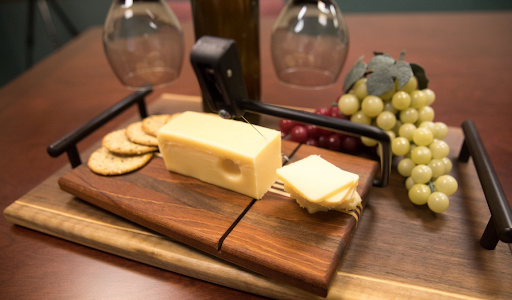Shaping Quality and Function with a Wood Cutting Board Handle
Understanding the Purpose of a Wood Cutting Board Handle
A wood cutting board handle serves as more than just a place to hold. It’s a practical and aesthetic element that improves control, presentation, and convenience. Whether transporting food, cleaning, or hanging the board for storage, the handle plays a crucial role in both form and function. Well-designed handles also add a handcrafted touch, enhancing the board’s value and usability in any kitchen.
Why Handle Design Enhances a Cutting Board
A cutting board without a handle can be cumbersome, especially when heavy or wet. Adding a wood cutting board handle helps maintain a secure grip and makes it easier to serve or transfer ingredients. It also aids drying and storage by allowing the board to hang. Thoughtful handle placement contributes to the longevity of the board and reduces strain during frequent use. For woodworkers, the handle adds a professional finishing touch that elevates the overall build.
How to Choose the Right Handle Style
Ergonomic vs. Decorative
Ergonomic handles are designed with comfort in mind, often featuring curves or grooves to fit naturally in the hand. These are ideal for boards used daily. Decorative handles, while not always as practical, add character and visual appeal. Some boards blend both elements, offering comfort and craftsmanship in one.
Integrated vs. Attached
An integrated wood cutting board handle is carved directly into the board’s body, maintaining structural integrity and a seamless look. Attached handles, often made of metal or contrasting wood, offer a modern aesthetic and may include hanging holes or leather straps for added utility.
Steps to Create a Handle on a Wooden Cutting Board
1. Design and Marking
Start by outlining the handle placement with a pencil. Whether you’re making a hole, a side cut-out, or a full grip, make sure the shape is both functional and visually balanced. Use a stencil for consistency if making multiple boards.
2. Drilling or Routing
For cut-out handles, use a Forstner bit or jigsaw to create the main opening. A plunge router can clean up the edges and create smooth lines. Edge handles may be routed using a round-over or cove bit to enhance grip.
3. Sanding for Comfort
Once the handle is cut, sand thoroughly with progressively finer grits. This ensures a smooth finish that feels natural in the hand. Use a spindle sander or hand tools for tight areas. No one wants splinters or rough edges in a kitchen tool.
4. Finishing Touches
Apply a food-safe finish, like mineral oil or beeswax, to protect the board and handle. This enhances the grain and provides water resistance. Reapply regularly for best results.
Best Wood Types for Boards with Handles
Hard Maple
One of the most popular choices due to its durability, resistance to knife marks, and neutral color.
Walnut
Rich in color and naturally antimicrobial, walnut creates an elegant, durable board.
Cherry
Offers a reddish hue that darkens over time and is relatively easy to work with.
Each of these woods pairs well with a wood cutting board handle, whether integrated or added on. They maintain structural integrity while allowing smooth carving and fine finishing.
Ideal Use Cases for Boards with Handles
Home Cooks
The home kitchen benefits greatly from handled boards, especially for compact storage and meal prep that requires movement between stove and counter.
Charcuterie and Serving
Presentation boards need handles for ease of transport and visual appeal. A well-crafted wood cutting board handle gives guests something to admire while keeping serving practical.
Outdoor Cooking
Grilling and outdoor chefs appreciate boards that can be moved quickly and hung nearby. Handles help prevent drops or slips when transporting hot items.
Maintenance Tips to Keep Handles in Top Shape
- Clean gently with warm water and mild soap.
- Avoid soaking to prevent swelling or cracking.
- Dry upright or hang using the handle to promote airflow.
- Reapply oil monthly to maintain finish and prevent drying.
- Inspect edges and grip areas for splinters or wear.
Regular care ensures your wood cutting board handle remains smooth and strong through years of use.
Common Handle Designs and Their Benefits
| Handle Style | Description | Best For |
| Cut-out Grip | Integrated hole in the board | Hanging, serving |
| Side Groove | Indented finger grip on sides | Easy lifting, daily prep |
| Paddle Handle | Extended section at one end | Charcuterie, pizza boards |
| Attached Metal Ring | Decorative and functional loop | Hanging storage |
| Leather Strap | Rustic appearance with hanging option | Decorative or farmhouse use |
Each style complements different functions and aesthetics, but all center on one idea: make the board easier to use.
Eco-Friendly and Sustainable Considerations
Choosing sustainably harvested wood like FSC-certified maple or walnut adds an eco-conscious layer to your woodworking. Pair that with a natural oil finish and you have a product that’s safe for food and kind to the planet. If making or buying boards for resale, sustainability is an added value.
Clearing Up Confusion
What’s the best wood for a wood cutting board handle?
Hardwoods like maple, walnut, and cherry are best due to their strength and ability to resist wear and moisture.
Can I add a handle to a board I already own?
Yes. You can carve, drill, or attach a handle depending on the board’s thickness and your tools. Always sand and seal it afterward.
Do handles weaken the cutting board?
If made properly, no. Integrated handles carved with care will not compromise the structure. Avoid making the handle too close to the center.
How do I maintain the handle specifically?
Treat it like the rest of the board: clean, dry, and oil regularly. Pay special attention to curved or narrow sections where damage may start.
Is a wood cutting board handle necessary?
Not always, but it greatly increases portability and presentation value. For multifunctional boards, a handle is strongly recommended.
Final Thoughts on Crafting a Quality Wood Cutting Board Handle
Incorporating a wood cutting board handle adds not only convenience but also character to your kitchen tools. Whether you’re a craftsman or a home cook, designing and maintaining the right handle improves the board’s durability, aesthetics, and user experience. With attention to shape, material, and finish, a simple handle transforms an ordinary cutting board into a cherished piece of functional art.
Stay connected for the latest news and updates on Ancientartz!






